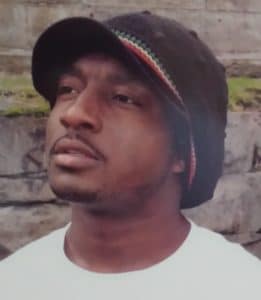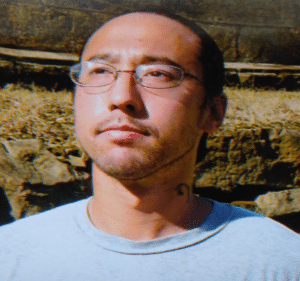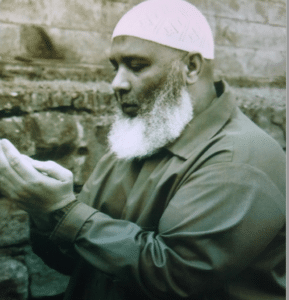[This article is excerpted from Crimson Letters: Voices from Death Row by Tessie Castillo, Michael J. Braxton, Lyle May, Terry Robinson and George Wilkerson, Black Rose Writing, 2020.]
“Don’t shake the inmates’ hands,” said the beefy prison guard, who towered at least a foot over my head. “The men won’t wash their hands for a week and they’ll use them to masturbate. I don’t want to be cleaning jizz off the walls.”
I glanced at the floor. Dr. Kuhns, the soft-spoken psychologist standing next to me, told the officer I had volunteered to teach a journaling class to Death Row prisoners.
The guard curled his lip, but waved us into an adjacent classroom. “Can’t believe I have to put extra guys on the shift for this shit,” he grumbled.
“Sorry about him,” whispered Dr. Kuhns when we were out of earshot. “We just started offering classes to Death Row a few weeks ago. Some staff is supportive, but others…” He shrugged.
“It’s okay,” I replied as I looked around the room. A whiteboard hung on a concrete wall and a few chairs stood in a corner. Dr. Kuhns helped me arrange the chairs in a circle.
“I’ll stick around to help with introductions,” he said.
I nodded. Tension clawed at me. During our walk to the classroom, heavy automatic doors had interrupted corridor after endless corridor. Operated by an unseen controller, the doors opened without warning and shut behind us with ominous clangs. Lines of men in jumpsuits had trudged past. They glanced at us, hunched and hollow-eyed like coal miners wasted from lack of sun. But the air damned the place. Basement air. Too still. Too stale.
As we sat to await the men, nervousness skittered through me like tiny spiders. Soon men convicted of murder would fill the room. How would they react to a woman among them? Adding to my general unease, Dr. Kuhns had asked me to keep these meetings a secret.
“The prison doesn’t want the public to know about these classes,” he had explained. With a sad smile, he added, “People want us to punish these men, not teach them.”
After several minutes, a line of men in blood-red jumpsuits shuffled into the classroom. I jumped up and offered my hand (damn the guard), which some took, though few smiled in return. The correctional officer stayed in the corridor. The men sat. I breathed.
“Welcome to journaling class,” I said. “My name is Tessie. I want to help you share your stories.”
I asked the men their names and why they wanted to write. As they went around the room, I tried to remember their names. Most looked at the floor when speaking.
Several men said they had little schooling and wanted to improve their writing. Others wanted to write stories. Some admitted signing up out of boredom or curiosity.
After introductions, Dr. Kuhns passed out journals. The men hunched over their notebooks and filled the room with the soft sound of scribbling.
The two dozen participants represented many ages and races, though the majority were black. Before my first day of class, Dr. Kuhns had sent me a class roster. I had used it to research their crimes. I assumed only the most heinous murders earned a death sentence—those involving children, rape, torture, or serial killing. After all, many people kill, but few are executed for it.
To my surprise, I discovered that few men in my class were convicted of grisly murders. Drug dealer skirmishes or robberies gone wrong made up most of their crimes. In fact, according to trial transcripts, two of my class participants had killed no one. They had taken part in crimes during which a co-defendant murdered the victim. In both cases the actual murderer did not get the death penalty.
After 10 minutes, everyone put down their pencils.
“The day I watched that bird escape, not once did I consider what the ordeal must have been like for it. I didn’t consider how afraid it must have been swallowed up in the darkness.”
“Who wants to share what they wrote?” I asked.
Silence.
“Come on,” I coaxed. “Anyone?”
A round-faced black man raised his hand.
“Go ahead, Chanton,” I said, pleased to remember his name. Chanton began reading with a cadence revealing a long life in the streets. He had written a scene from his childhood about trapping a bird.
“The day I watched that bird escape, not once did I consider what the ordeal must have been like for it,” he read. “I didn’t consider how afraid it must have been swallowed up in the darkness. The loneliness and confusion it must have felt… Would its family miss it? Were there young that depended on its safe return for survival? Today, on Death Row, I am that bird. Yet here, there are no cracks to breach, no slits from which to escape, and the only air to breathe holds the aroma of death.”

Chanton (Terry Robinson)
His story earned appreciative claps and encouragement from his classmates. Other men volunteered to read. Some wrote simple things such as their dislike of prison food, or “chow.” Others dug deep. A tall black man with graying dreadlocks named Paul Brown shared an essay about his granddaughter’s visit. It pained him that thick Plexiglas walls separated them. Another wrote of loneliness. None of his family members wrote to him. Each recitation met claps and murmurs of support. By the end of class, most people were eager to share.
I returned to teach every two weeks. Sometimes a correctional officer sat in the corner, but most patrolled the corridor, leaving me alone with the men. I wasn’t afraid. My students never gave me a reason to fear them.
Most of the classes followed a similar format. The students voted on writing prompts and read their essays aloud, offering each other feedback. They often wrote of yearning for freedom and family. Many expressed regret at not seeing their children and grandchildren grow up.
During one exercise, the men selected the prompt “women.” I braced myself, expecting an onslaught of porn-inspired fantasies. But when we read their pieces, not one person had written about sex. Most wrote tributes to the strong mothers, grandmothers, aunts and sisters who had raised them. Others wrote tender stories of first kisses and grade-school crushes.
After a few weeks, Dr. Kuhns suggested we divide into two groups for an hour each. In this intimate setting, I got a closer look at each writer. Alim, a large biracial man of Islamic faith, had a booming voice perfect for radio. He injected dynamics and theatricality into his readings, which were fraught with remorse. Alim was the only person who admitted to me he had committed murder. No one else mentioned guilt or innocence. I never asked.
Chanton, who had shared his story of the escaped bird, laughed often and radiated warmth into the bland, cement room. He was humble, a rare trait in a place where survival can depend on dominance. His soft encouragement became a staple feature of our classroom.
I encouraged him to open more. Though reserved, he harbored deep ambitions to defy prison stereotypes.
Lyle, a tall, gangly white man, spoke little and smiled even less. But when he did speak, his words revealed raw intelligence that silenced the room. He had published a memoir on his life leading up to the death sentence, but his pieces lacked emotion. I encouraged him to open more. Though reserved, he harbored deep ambitions to defy prison stereotypes.

Lyle May
Most of the men suffered from mental illness, anxiety or depression. Several absented class often because they were too despondent to leave bed. Some drifted into the classroom like zombies, then came alive, massaged awake by shared stories. They ducked their heads when reading, nodded at constructive criticism, and encouraged each other. I critiqued their pieces with care because their tough exteriors hid sensitivity.
Listening to their stories over several months, I learned that most writers had followed similar paths to prison. They grew up in poor neighborhoods and witnessed violence as young as three years old. In environments where compassion implied weakness, they earned credibility by acting tough and mean. As adolescents, they developed trip-wire response to disrespect and loyalty to crew even if it meant taking a life or losing their own.
“I was a kid. I was conflicted. My spirit is gentle, yet I had to compete and contend with killers.”
Paul Brown, the man with dreadlocks, wrote: “My stepdad left when I was 9, telling me I was the man of the house. It was a brutal environment. People had to know they couldn’t fuck with me. That’s where my focus had to be. But I didn’t do a good job. I was not a good big brother or ‘man of the house.’ I was afraid. I was a kid. I was conflicted. My spirit is gentle, yet I had to compete and contend with killers.”
Six months into the journaling program, another North Carolina man received a death sentence. The newspapers described the events leading to his trial in vivid detail. The public cried “off with his head.” I cringed at the crime, but I had spent enough time with convicted men to understand the term “monster” reflects on the accuser more than the accused. Most people, even the rule-breakers, are not dangerous, immoral, or unredeemable. Everyone is broken, but for some, the brokenness is easier to hide.
I wanted to share these insights, but I recalled Dr. Kuhns’ warning about keeping our classes a secret. For weeks I grappled with the dilemma. Then, considering that so few people enter North Carolina’s Death Row, I decided to tell my story.
In May 2014 I published an editorial in the Raleigh News & Observer. An excerpt read:
I have been meeting twice a month with about 15 men on Death Row and the experience has been both edifying and moving. I don’t see heartless killers, though they might have killed in a moment of heartlessness. I see anger problems, stubbornness, lack of self-control, immaturity and miseducation. I see those qualities in people outside prison, too. I see them in myself sometimes. But in these men I also see pain, regret, a capacity for kindness and self-reflection – and a desire to be seen for what they are: flawed and very human … After spending time with these men and listening to their stories, I don’t claim to know them thoroughly or to fully comprehend why they did what they did. Nor do I defend the crimes of any man on Death Row…But I will defend their humanity because I see it every time I walk through those prison doors. I would challenge those who support the death penalty to spend time getting to know a Death Row inmate on a personal level. In each of these men there are many things worth understanding, worth supporting, and worth saving.
Two weeks later, I received a letter from the prison warden.
Dear Ms Castillo,
It is in the best interest of all parties concerned that you be dismissed as a Community Volunteer. Therefore; effective immediately, you will not be allowed to enter the facility as a Community Volunteer. I thank you for your service to Central Prison.
Reading the letter, my hands shook. Guilt pooled in my stomach. With my dismissal, my students lost something that broke the relentless monotony of prison life. I had risked something important without asking their permission.
I appealed the dismissal, and lost, so I wrote to them. The first round of letters received a flurry of responses from Chanton, Lyle, Alim, and Paul. Later I began writing to another Death Row resident named George. The men accepted my apology for the editorial, and we developed a steady correspondence. They wrote of prison, family, books, spirituality, personal growth and coming to terms with their sentences. At times the letters were cheerful. Other times the men seemed half mad from emasculation and grief.

George Wilkerson
Paul wrote once, “Living in this environment is to experience death in the form of life. There is the anguish of living day-to-day knowing the suffering you have caused and not being able to make amends. Watching your family deteriorate as you drift further apart, not being able to comfort, console or even wipe away the tears, you die a little every day.”
Lyle, the tall, quiet student, confessed, “Over the years I continue to lean on prayer and try to live my life as it should have been from the beginning. And as I go along discovering all of these wonderful things about life that I can no longer touch, taste, smell, see and feel, I beg God for mercy. I plead with him to give my time here purpose beyond punishment.”
“How easy would it be for you to tell me the worst thing you have ever done—and then what if you had to wear a uniform or some symbol to let everyone know your sin?”
I imagined Alim’s booming voice as I read his words: “I’m accustomed to being the ‘exhibit’ with my life experiences, thoughts and feelings on display. But rarely is there opportunity for meaningful exchange. It’s like everybody wants to look at the monster, but everybody is afraid to let the monster see them. People on Death Row are vulnerable because they want to be known, they want to be understood and that is usually because people have already seen the worst of who they can be … it is easy for me to tell you about the worst thing I have ever done in my life … I wear a uniform that says it: There is the killer, the one in the red jumpsuit. But how easy would it be for you to tell me the worst thing you have ever done—and then what if you had to wear a uniform or some symbol to let everyone know your sin?”

Alim (Michael J. Braxton)
As years passed, letters piled up. Secrets spilled from the folders where I kept our correspondence. The essays offered a unique window into the minds of men living in the shadow of execution. They challenged stereotypes about people convicted of murder, proving grace and self-reflection can grow in the most unlikely places.
In 2016 I proposed writing a book to five correspondents: Paul, Alim, Lyle, Chanton and George. Perceptive writers, they hailed from distinct cultural and religious backgrounds. Their stories represented diverse experience.
The men agreed to co-write a book. Over the years they sent me dozens of essays describing their paths to conviction and the struggle to thrive despite a death sentence. I selected the essays which best reflect the author’s heart and journey and worked with each writer on revisions.
The book project spanned four years of interpersonal politics and struggle to support friendships across time and distance. Paul Brown withdrew from the book project. Despite setbacks, I felt honored to open each letter, to laugh and to cry and to marvel at the human capacity to survive in the harshest circumstances.
I believe that little separates people inside Death Row from those outside it. We are all a complex jumble of hopes, dreams, virtues and mistakes. We strive to be better people. We often fail. Being human is learning to rise again—as these men do, despite the odds—to prove we are more than our worst crime.
Excerpted from Crimson Letters: Voices from Death Row. Copyright 2020 by Tessie Castillo. Posted with permission of the publisher. Crimson Letters: Voices from Death Row is a collection of essays written by residents of North Carolina’s Death Row. Each carefully crafted personal essay illuminates the complex stew of choice and circumstance that brought four men to Death Row and the small acts of humanity that keep hope alive for men living in the shadow of death. Now available on Amazon.
Sign up for Tessie Castillo’s newsletter for a chance to win a FREE book copy!
Top photo of San Quentin Prison by Zboralski via Wikimedia Commons/Creative Commons. All other photos courtesy of Tessie Castillo/Black Rose Writing.





Show Comments